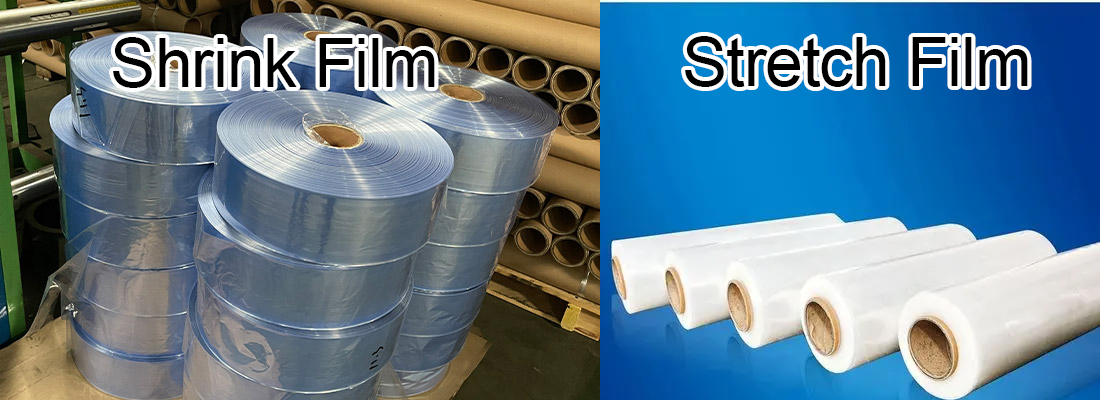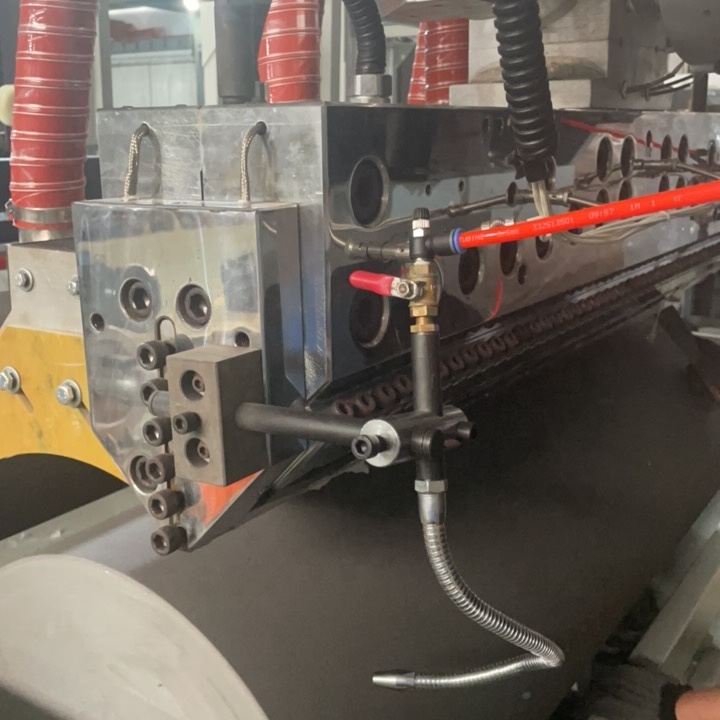- since 1985 -
- since 1985 -
The use of contraction film and stretching film is completely different, but it is easy to be mistaken for the same product, when in reality, there are significant differences between the two.
The most common requirement is that people ask about 'shrink film', when in reality they mean 'stretch film'.

Shrinkage film and wrapping film are both materials used for logistics packaging, but their usage and functions are different.
Shrinkage film is a type of packaging that wraps materials around goods and shrinks them by heating. It is commonly used in anti-counterfeiting packaging and packaging to effectively protect goods from damage and tampering.
Wrapping film is used to wrap materials around objects to prevent them from loosening and cracking, playing a fixed role.
Shrinkage film is generally made of plastic materials such as polyethylene, which can make the material shrink and shrink after heating.
The winding film is generally made of plastic materials such as LLDPE (linear low density polyethylene), which is not easy to break and has strong tensile strength and wear resistance.
Shrinkage film is generally a transparent hard material that can be wrapped around the object for shrinkage, making the object more flat and beautiful.
Wrapped film is a type of thin film material, usually transparent or semi transparent. Due to its extensibility, it undergoes certain tensile deformation when wrapping items, which can play a role in fixing them.
Shrinkage film is a commonly used anti-counterfeiting packaging material, suitable for occasions such as cosmetics and precision instruments that require anti-counterfeiting packaging.
The wrapping film is mainly used for logistics packaging, such as packages, pallets, and other items, which can play a role in dust protection and fixing items.
Although shrinkage film and wrapping film are commonly used materials in logistics packaging, there are significant differences in usage, raw materials, appearance, and usage scenarios.
When selecting suitable packaging materials, enterprises should choose based on different product characteristics and packaging needs to achieve the best packaging effect.
There is a lot of history behind the thousands of tons of pallet packaging sold today. Although many people try to claim to be inventors, no one can determine the exact date of the invention of stretch film.
Before the emergence of stretch film, companies used anything they could find to try to secure their goods together, which was both time-consuming and highly unreliable. It became very popular in the mid-19th century, when organizations, especially chain supermarkets, established large warehouses for distribution to multiple locations.
The company has started using its own plastic wrap to secure goods on pallets for transportation, which also brings other benefits such as moisture and dust prevention. As companies explore new manufacturing processes and materials, pallet packaging is becoming increasingly efficient.
The first batch of low density polyethylene (LDPE) and polyvinyl chloride (PVC) stretch films were put into use in 1972, as safety loads became a top priority for many enterprises. Since then, manufacturers have continuously improved the strength and tear resistance of films, and now there are various thicknesses and types of stretched films.
When manufacturing stretch films, the production process typically involves using a Stretch Film Machine.
When manufacturing stretch films, there are two completely different production processes: Cast and blown film.
There are several features that both films share,however the production process plays a key part in making the films fit for different purposes.
1. Resin preparation
The stretching film is made of a unique polymer mixture, which includes various additives such as pigments, UV resistant agents, and tackifiers. LLDPE resin is mixed with these additives (such as colorants and stabilizers) to obtain the required film performance. Once the correct polymer is loaded, the film extrusion process begins.
2. Extrusion
First, heat and melt the resin mixture until it melts and reaches the correct viscosity. The next thing that happens is what sets Cast and Blown movies apart. The molten material is forced through a flat mold to begin the cooling and forming process.
3. Casting
The cast film cools and solidifies the material by passing the flat plate through a series of large rollers. This process is called casting because the resin is cast onto the cooling roller, resulting in a smooth and transparent surface for the film.

4. Blowing film
Blowing film is a very different extrusion process from casting. Cooling the molten material by expanding the resin into very large bubbles several meters high. This will cause it to expand and thin when cooled.
Carefully monitor and control the size and thickness of bubbles to ensure that the film has the required performance before being fed into the machine for stretching.
5. Winding
The stretched film is then wound onto large rolls, called mother rolls, ready for the slitting process to begin.
6. Cutting
Then, according to the required product specifications, cut the large roll of film into small rolls of different widths.
During the production process, various factors such as resin formula, stretching conditions, and cooling rate can affect the puncture resistance, opacity, adhesion, and other properties of the film.
Therefore, manufacturers carefully control these variables to produce stretched films with consistent quality and performance.